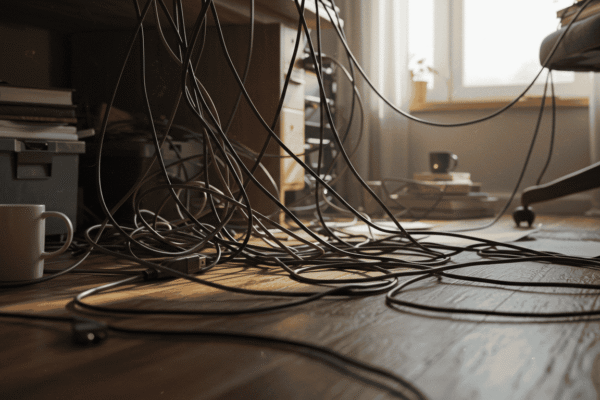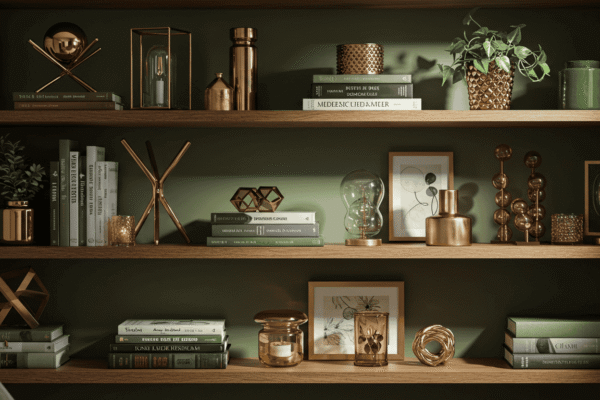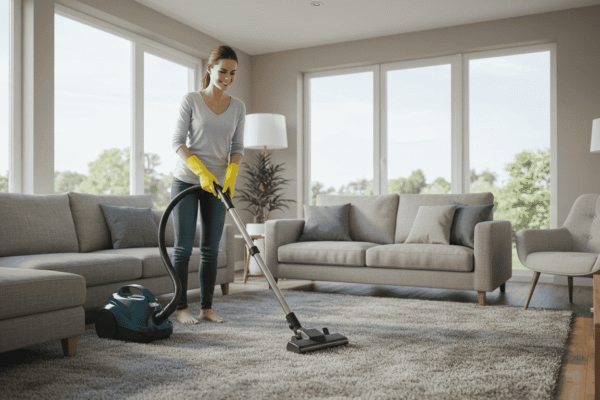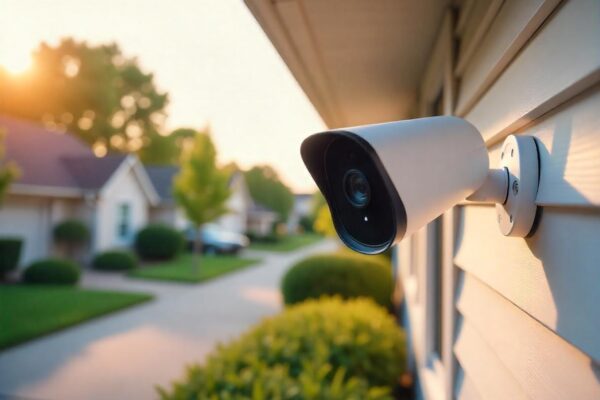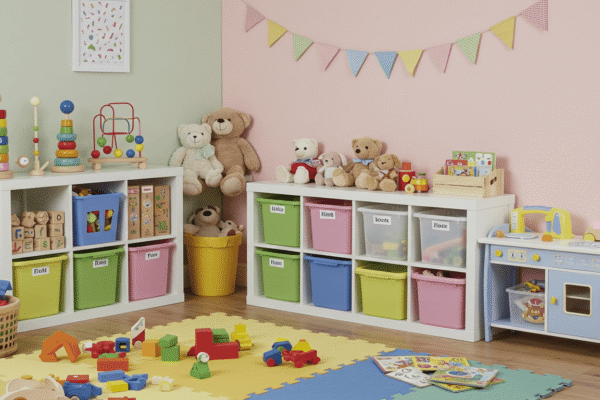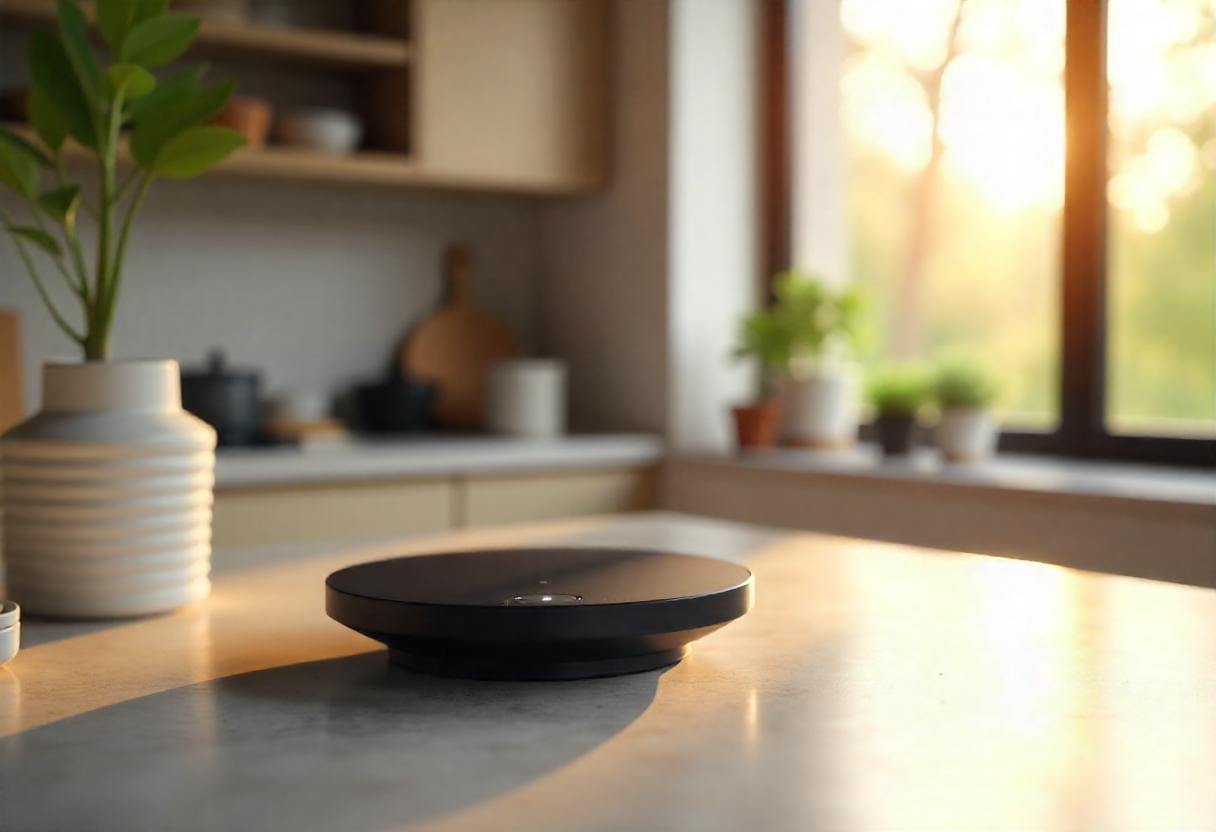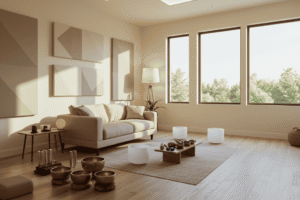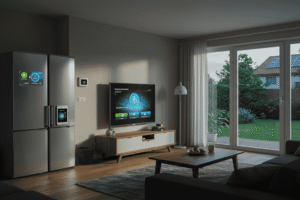Smart Home Hub technology is quickly becoming the cornerstone of modern home automation, offering an easy way to control all your smart devices from one place. Whether you’re just starting out or looking to simplify your connected gadgets, understanding how to set up a smart home hub is essential. This beginner-friendly guide will walk you through the basics of smart home hub setup, explain why it’s important for seamless home automation, and provide practical tips to get your smart devices working together smoothly. Say goodbye to juggling multiple apps and hello to a smarter, more connected home experience!
Understanding What a Smart Home Hub Really Is
Getting to know the smart home hub is the first step toward creating a fully connected and automated home. At its core, the hub acts as the central brain of your smart home system. It brings together all the different smart devices you own — from lights and thermostats to security sensors and speakers — and allows them to work together seamlessly. Without a hub, you might find yourself managing each device separately, juggling multiple apps and controls. The smart home hub simplifies this by providing one unified platform to control and automate your entire home environment.
The Heart of Your Smart Home Ecosystem
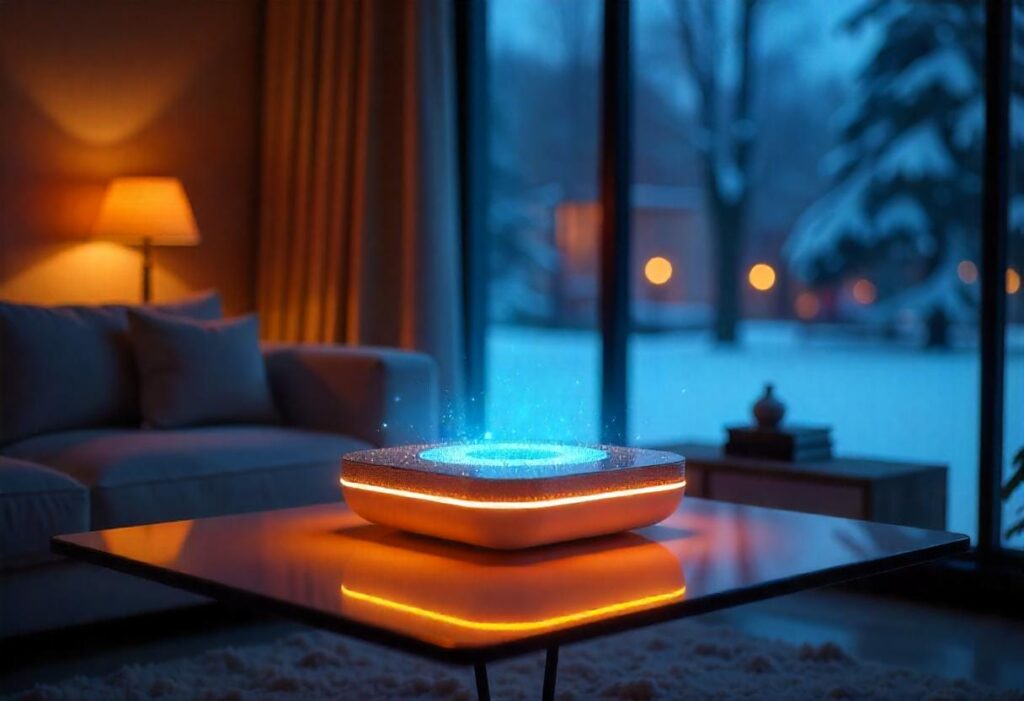
Think of the smart home hub as the command center that connects and coordinates all your smart devices. It communicates with each device, interprets your commands, and sends instructions back, creating a smooth interaction between devices that would otherwise operate independently. This central control helps ensure your lights turn on when you enter a room, your thermostat adjusts according to your schedule, and your security system alerts you instantly — all without needing to manage each device separately.
How Smart Home Hubs Communicate: Protocols 101
The magic behind the smart home hub lies in its ability to speak multiple “languages,” or communication protocols, used by smart devices. The most common protocols include Zigbee, Z-Wave, Wi-Fi, and Bluetooth. Each protocol has unique advantages:
- Zigbee and Z-Wave are designed specifically for smart home devices, offering low power consumption and reliable mesh networking to cover large homes.
- Wi-Fi is widely used for devices that need high-speed internet connectivity but can consume more power.
- Bluetooth is great for short-range communication, ideal for controlling devices nearby.
Understanding these protocols helps you know how your smart home hub connects and interacts with your devices, ensuring compatibility and better performance.
The Difference Between a Hub and a Smart Device
It’s common for beginners to confuse a smart home hub with smart devices themselves. A smart device is any individual gadget, like a smart bulb or a thermostat, that performs specific functions and can usually be controlled via an app. A smart home hub, however, is the central system that links all these devices together. While smart devices can often operate independently, the hub enables them to communicate with each other and be managed collectively, making your smart home truly “smart.”
Interactive Element: Comparison of Communication Protocols
| Protocol | Range | Speed | Compatibility | Energy Use |
|---|---|---|---|---|
| Zigbee | Up to 100 meters | Moderate | Supports many smart home devices | Low |
| Z-Wave | Up to 150 meters | Moderate | Works with wide device range | Low |
| Wi-Fi | Depends on router | High | Universal, internet-enabled | High |
| Bluetooth | ~10 meters | Moderate | Best for close proximity devices | Very Low |
This table offers a quick overview of how each protocol differs, helping you understand what powers your smart home hub and its connected devices.
Why You Need a Smart Home Hub for Automation
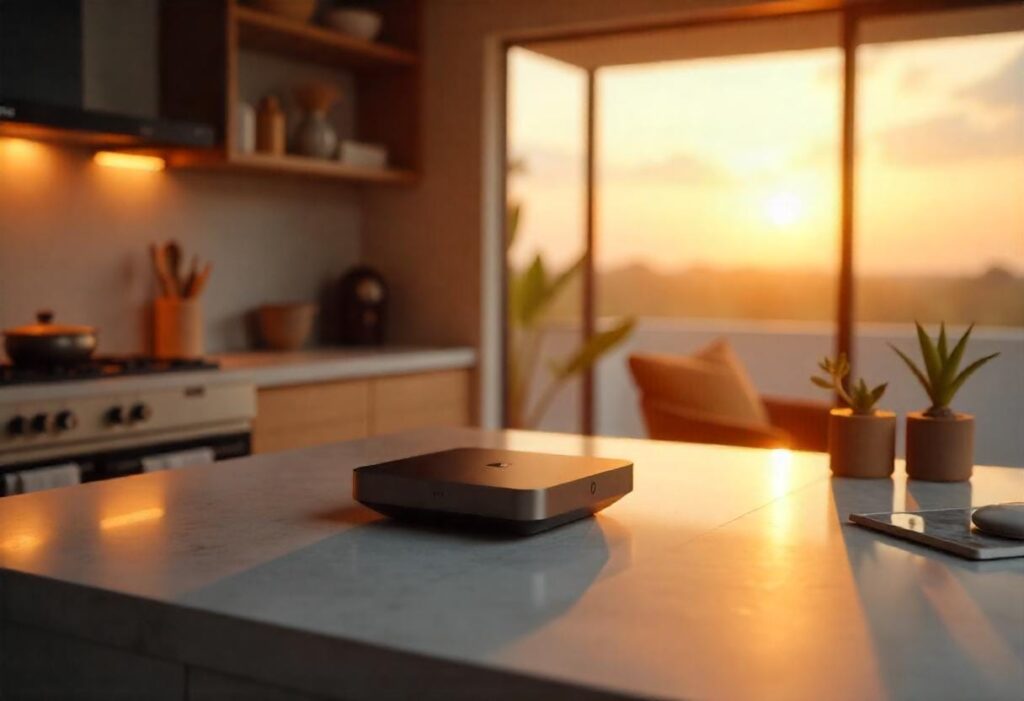
If you’re looking to take your home automation to the next level, a smart home hub is essential. It acts as the brain behind your connected devices, enabling them to work together in harmony. Without a hub, managing multiple smart devices can quickly become overwhelming, requiring you to juggle several apps and controls. The hub simplifies this by unifying your smart home into one cohesive system, making automation accessible and efficient for everyone.
Simplifying Control: One App to Rule Them All
One of the biggest advantages of using a smart home hub is that it consolidates the control of all your smart devices into a single app or interface. Instead of switching between multiple apps to adjust your lights, thermostat, or security cameras, the hub provides a centralized platform where you can easily manage everything. This simplicity not only saves time but also reduces frustration, making smart home management more enjoyable and less complicated for beginners and experts alike.
Enhancing Security with Centralized Monitoring
A smart home hub significantly improves your home’s security by centralizing the monitoring and control of all security-related devices. Whether it’s sensors, cameras, or alarms, the hub allows you to receive real-time alerts and respond quickly from one place. This centralization means you can automate security actions, such as locking doors at a certain time or turning on lights when motion is detected, enhancing the safety and peace of mind of your home.
Unlocking Advanced Automation Possibilities
Beyond simple controls, a smart home hub unlocks powerful automation capabilities that go far beyond what individual devices can do. With the ability to create complex “if this, then that” (IFTTT) routines, you can customize your smart home to respond intelligently to various triggers. For example, you can set your lights to turn on automatically when you arrive home or have your thermostat adjust based on the weather forecast. These advanced automations make your home more responsive, efficient, and personalized to your lifestyle.
Preparing Your Home for Smart Hub Installation
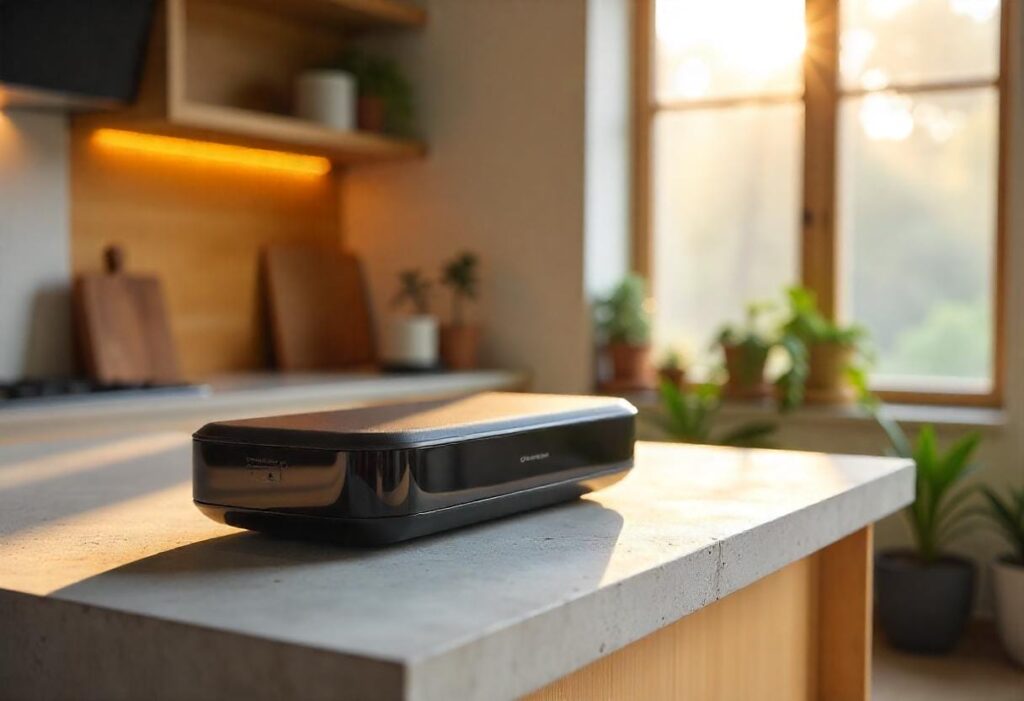
Before diving into the setup of your smart home hub, it’s important to prepare your home environment to ensure everything runs smoothly. Proper preparation can save you time and frustration, helping your hub and connected devices communicate effectively. This section will guide you through the essential steps to get your home ready for a seamless smart home hub installation.
Checking Your Network Setup
A reliable internet connection is the backbone of any smart home hub. Whether you use Wi-Fi or a wired connection, having strong, stable internet is critical for maintaining communication between your hub and smart devices. Weak signals or network interruptions can cause delays, disconnections, or unresponsive devices. To optimize your home network, consider placing your router centrally, using range extenders if needed, and minimizing interference from other electronics.
Inventory of Compatible Smart Devices
Before setting up your hub, take stock of all your existing and planned smart devices. Create a list or categorize them by device type—such as lighting, security, climate control, or entertainment—and note their communication protocols if possible. This inventory helps ensure your smart home hub will support all your gadgets and avoids surprises later in the setup process. Knowing what you have also allows you to plan future upgrades or additions more strategically.
Planning Hub Placement for Optimal Coverage
Where you place your smart home hub directly impacts its performance. Ideally, the hub should be located centrally within your home, free from physical obstructions like thick walls or metal objects that could weaken signals. Keep it away from other electronics that may cause interference, such as microwaves or cordless phones. Thoughtful placement ensures your hub can communicate reliably with all your smart devices, maximizing coverage and responsiveness.
Interactive Element: Smart Home Readiness Checklist
| Task | Status (✓/✗) | Notes |
|---|---|---|
| Strong Wi-Fi or wired network available | ||
| Router placed centrally | ||
| List of current smart devices completed | ||
| Devices categorized by type | ||
| Hub placement location planned | ||
| Interference sources identified |
Use this checklist to track your preparation progress and make sure your home is ready for the smart home hub setup.
Step-by-Step Smart Home Hub Setup

Setting up your smart home hub might seem intimidating at first, but following a clear step-by-step process makes it straightforward and enjoyable. This section breaks down the setup into simple stages, guiding you through unboxing, powering, connecting, and configuring your hub so you can start automating your home with confidence.
Unboxing and Powering Your Hub
When your smart home hub arrives, start by carefully unboxing it and checking the contents for the hub unit, power adapter, and any included accessories. Before plugging it in, choose a secure and well-ventilated spot, ideally close to your main router or internet source. Connect the power adapter to the hub and then to a power outlet, making sure the connection is firm. Most hubs will indicate they’re powered on through LED lights or a display, signaling they’re ready for the next step.
Connecting the Hub to Your Network
The next crucial step is connecting your smart home hub to the internet. You can do this either through Wi-Fi or an Ethernet cable, depending on your setup preference. For Wi-Fi:
- Open the hub’s companion app on your smartphone or computer.
- Follow the prompts to select your home Wi-Fi network.
- Enter the password and wait for the hub to connect.
For Ethernet:
- Plug one end of the Ethernet cable into the hub.
- Connect the other end to your router.
- The hub should automatically detect the connection.
A stable network connection is key to smooth performance, so take your time to ensure the hub is properly linked.
Adding Devices and Configuring Automations
With your smart home hub powered and connected, it’s time to add your smart devices. Open the hub’s app and follow the pairing instructions for each device. This usually involves putting the device into pairing mode and letting the hub discover it. Once devices are added, you can create basic automation routines. For example, set your lights to turn on automatically at sunset or have your thermostat adjust when you leave home. These “if this, then that” automations bring your smart home to life, making everyday tasks easier and more efficient.
Troubleshooting Common Setup Issues

Even with the best preparation, setting up a smart home hub can sometimes present challenges. Don’t worry—many common issues have simple solutions. This section will help you identify and fix typical problems so your smart home runs smoothly and frustration-free.
When Devices Won’t Connect
If your smart home devices aren’t connecting to the hub, it’s often due to basic issues like incorrect pairing mode, incompatible protocols, or network glitches. First, ensure the device is in pairing mode and close enough to the hub. Restart both the hub and the device if needed. Double-check that your hub supports the device’s communication protocol. Sometimes, removing the device from the app and re-adding it can solve the issue quickly.
Network Interference and Signal Range Problems
Wireless interference or being too far from the hub can cause devices to drop connection or respond slowly. Common sources of interference include thick walls, microwaves, cordless phones, and other wireless devices. To improve signal strength, try relocating the hub closer to your devices or use Wi-Fi extenders. Switching to wired Ethernet connections where possible can also reduce interference. Using the hub’s app tools to check signal strength can guide your adjustments.
Resetting Your Hub Without Losing Settings
If issues persist, performing a soft reset on your smart home hub might help. Unlike a full factory reset, a soft reset restarts the hub without wiping your configured settings and automations. Check your hub’s app or manual for the exact reset procedure. Additionally, regularly backing up your hub’s settings (if the platform allows) can save time if a full reset becomes necessary, preventing you from starting setup all over again.
Maintaining and Securing Your Smart Home Hub
Once your smart home hub is set up, maintaining its security and performance is crucial to ensure your smart home remains safe and efficient. Regular care and smart management practices help protect your investment and keep your connected devices running smoothly.
Regular Software Updates: Why They Matter
Firmware and software updates for your smart home hub play a vital role in enhancing both security and functionality. Updates often patch vulnerabilities that could be exploited by cyber attackers and introduce new features or improvements to existing ones. Ignoring updates can leave your hub exposed to risks or cause compatibility issues with newer smart devices. Setting your hub to update automatically, or checking for updates regularly, ensures your system stays current and secure.
Protecting Your Hub from Cyber Threats
With your smart home hub acting as the central controller, it’s a prime target for cyber threats. Protect your hub by using strong, unique passwords and enabling two-factor authentication if available. Avoid using default login credentials and limit remote access unless absolutely necessary. Secure your home network with WPA3 encryption and keep your router’s firmware updated. Additionally, be cautious when integrating third-party devices or apps to prevent potential vulnerabilities.
Managing User Access and Permissions
Controlling who can access and modify your smart home system is essential for security and peace of mind. Use your hub’s user management features to create different permission levels for family members, guests, or service providers. Restrict sensitive functions like security camera viewing or automation editing to trusted users only. Regularly review and update access permissions to ensure that only authorized individuals have control over your smart home.
Expanding Your Smart Home Ecosystem Over Time
Building a smart home hub setup is an ongoing journey. As your needs evolve, adding new devices and automations can enhance convenience and comfort without overwhelming your system. This section offers practical advice on growing your smart home ecosystem thoughtfully and securely.
Adding New Devices Without Overcomplicating Setup
Integrating new smart devices should feel seamless, not stressful. To avoid clutter and confusion, plan your expansions carefully. Choose devices that support your hub’s protocols and fit naturally into your daily routines. Use the hub’s grouping and labeling features to keep devices organized. Always update your hub’s firmware before adding new devices to ensure compatibility and stability.
Exploring Advanced Automation Ideas
Once you’re comfortable with basic setups, try advanced automations that anticipate your lifestyle needs. Examples include automating morning routines with lights, coffee machines, and thermostats activating together, or setting up security alerts that notify you of unusual activity only during specific hours. Creative automations not only save time but can add an element of fun and surprise to your home.
Balancing Convenience and Privacy
As your smart home hub ecosystem grows, so does the amount of personal data collected. Protect your privacy by regularly reviewing device permissions and data-sharing settings. Use encryption-enabled devices and avoid unnecessary cloud storage of sensitive information. Being mindful about what you automate and share helps maintain a healthy balance between convenience and privacy.
Interactive Element: Automation Ideas Ranked by Complexity and Usefulness
| Automation Idea | Complexity Level | Usefulness Rating (1-5) | Description |
|---|---|---|---|
| Simple light scheduling | Low | 5 | Lights turn on/off at set times daily |
| Motion-activated security alerts | Medium | 4 | Alerts triggered by unusual motion |
| Morning routine automation | Medium | 5 | Lights, thermostat, and coffee maker activate simultaneously |
| Geo-fencing automations | High | 5 | Devices react based on your location |
| Voice-controlled multi-device scenes | High | 4 | Activate multiple devices with one voice command |
Final Tips for Getting the Most Out of Your Smart Home Hub
Making the most of your smart home hub means more than just setting it up — it’s about continuous improvement and tailoring your system to fit your unique lifestyle. These final tips will help you enjoy a truly personalized and rewarding smart home experience.
Experiment and Customize Your Setup
One of the best things about a smart home hub is the endless possibilities for customization. Don’t hesitate to experiment with different device combinations and automation routines to discover what works best for you. Whether it’s adjusting lighting moods, creating time-based triggers, or integrating new devices, playing around with your setup makes your smart home truly yours.
Don’t Fear the Learning Curve
If you’re new to smart home technology, it’s normal to face a few bumps along the way. Learning to navigate the hub’s interface, understanding device protocols, and setting up automations can take time. Embrace these challenges as part of the fun—each obstacle overcome means you’re closer to mastering your smart home ecosystem.
Resources for Continuous Learning
To keep improving your smart home hub skills, tap into general resources like online forums, tech blogs, and community groups. These platforms offer helpful guides, troubleshooting tips, and inspiration from other smart home enthusiasts. Staying engaged with a community not only solves problems faster but also keeps you updated on new trends and best practices.
Mastering Your Smart Home Hub for a Smarter Living
Setting up and maintaining your smart home hub opens the door to a more connected, convenient, and secure lifestyle. By understanding its core functions, troubleshooting common issues, and continuously customizing your setup, you can create a smart home that truly fits your needs. Remember, mastering your smart home hub is a journey—embrace the learning process, stay curious, and enjoy the benefits of smart living every day.

